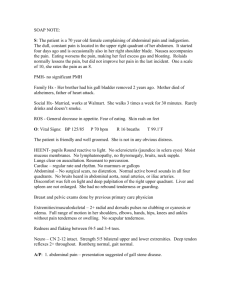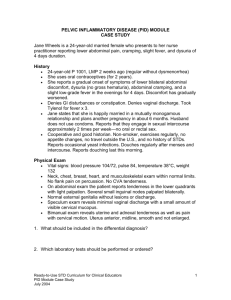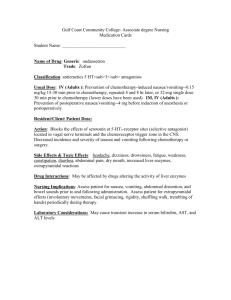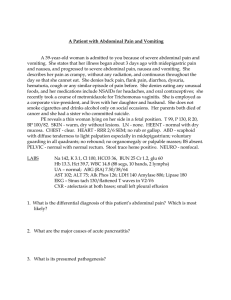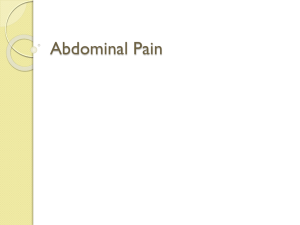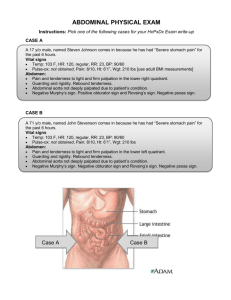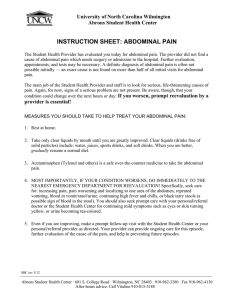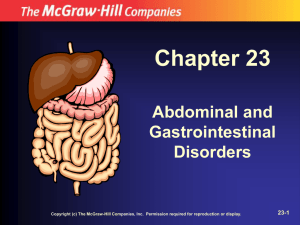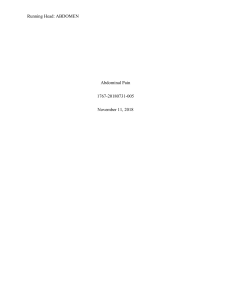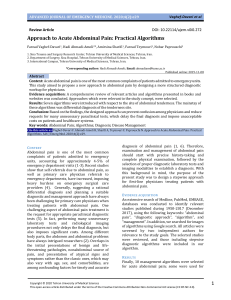Patient with dysuria, nausea and abdominal pain
advertisement
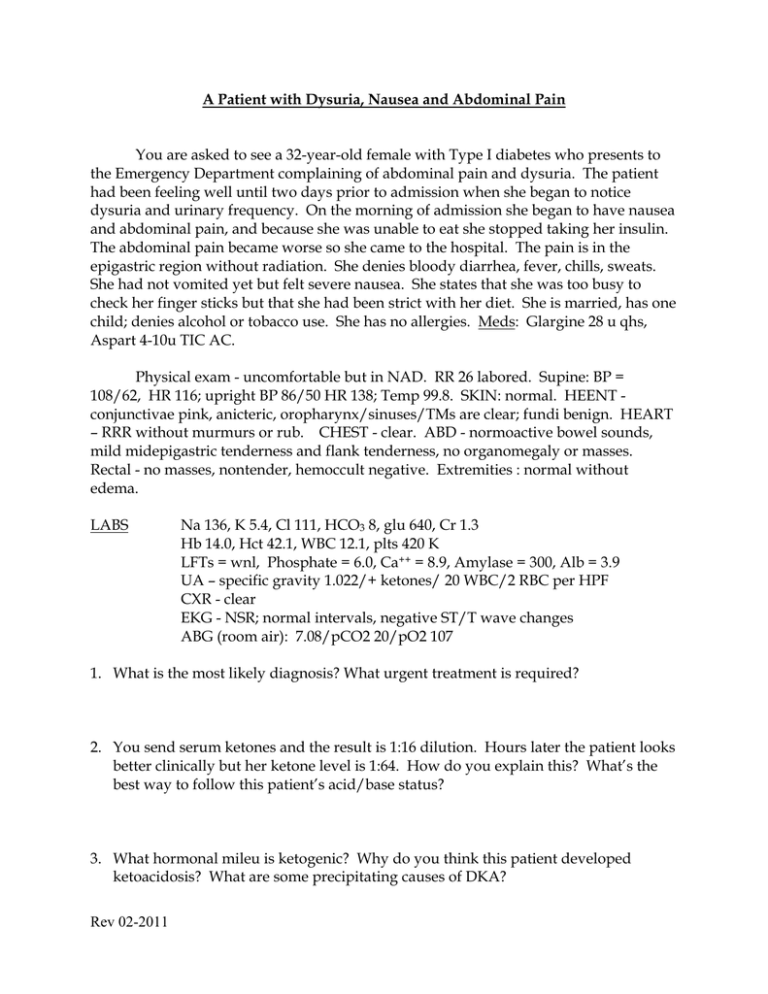
A Patient with Dysuria, Nausea and Abdominal Pain You are asked to see a 32-year-old female with Type I diabetes who presents to the Emergency Department complaining of abdominal pain and dysuria. The patient had been feeling well until two days prior to admission when she began to notice dysuria and urinary frequency. On the morning of admission she began to have nausea and abdominal pain, and because she was unable to eat she stopped taking her insulin. The abdominal pain became worse so she came to the hospital. The pain is in the epigastric region without radiation. She denies bloody diarrhea, fever, chills, sweats. She had not vomited yet but felt severe nausea. She states that she was too busy to check her finger sticks but that she had been strict with her diet. She is married, has one child; denies alcohol or tobacco use. She has no allergies. Meds: Glargine 28 u qhs, Aspart 4-10u TIC AC. Physical exam - uncomfortable but in NAD. RR 26 labored. Supine: BP = 108/62, HR 116; upright BP 86/50 HR 138; Temp 99.8. SKIN: normal. HEENT conjunctivae pink, anicteric, oropharynx/sinuses/TMs are clear; fundi benign. HEART – RRR without murmurs or rub. CHEST - clear. ABD - normoactive bowel sounds, mild midepigastric tenderness and flank tenderness, no organomegaly or masses. Rectal - no masses, nontender, hemoccult negative. Extremities : normal without edema. LABS Na 136, K 5.4, Cl 111, HCO3 8, glu 640, Cr 1.3 Hb 14.0, Hct 42.1, WBC 12.1, plts 420 K LFTs = wnl, Phosphate = 6.0, Ca++ = 8.9, Amylase = 300, Alb = 3.9 UA – specific gravity 1.022/+ ketones/ 20 WBC/2 RBC per HPF CXR - clear EKG - NSR; normal intervals, negative ST/T wave changes ABG (room air): 7.08/pCO2 20/pO2 107 1. What is the most likely diagnosis? What urgent treatment is required? 2. You send serum ketones and the result is 1:16 dilution. Hours later the patient looks better clinically but her ketone level is 1:64. How do you explain this? What’s the best way to follow this patient’s acid/base status? 3. What hormonal mileu is ketogenic? Why do you think this patient developed ketoacidosis? What are some precipitating causes of DKA? Rev 02-2011 4. Is there any role for intravenous bicarbonate therapy in this patient? 5. Are you concerned about the patient’s elevated serum K+ and phosphate? Explain. 6. The patient’s glucose is lowered to 200 and she is on a full liquid diet. Her IV insulin is discontinued and she is placed on 10 units SQ NPH bid with sliding scale coverage of regular insulin qid for finger stick values of 200 or more. Later that evening you see her and she is breathing deeply and rapidly. Her fingerstick is 410. Her bicarbonate is 12. What happened? Rev 02-2011
